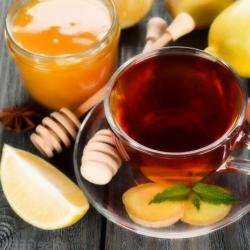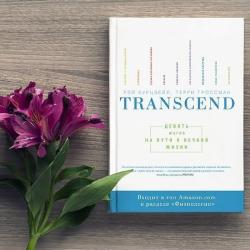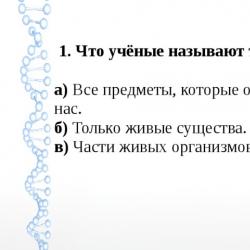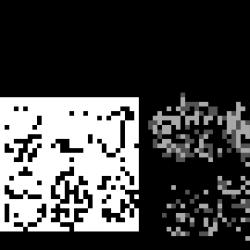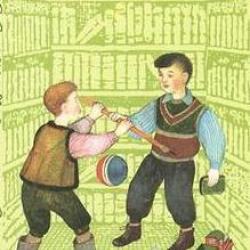Test "Bodies, substances, particles" test on the surrounding world (grade 3) on the topic. What are the states of substances?
TEST No. 3
OPTION 1
LAST NAME, FIRST NAME
1. What is a body? Circle the correct letter.
a) it is something made by human hands;
b) this is any object, any living creature;
c) this is any plant, insect, bird, animal.
2. Which line lists only substances? Circle the correct letter.
a) aluminum, iron, copper;
b) aluminum, pan, iron poker, copper basin;
c) a piece of sugar, a drop of dew, a crystal of salt.
3. Match.
4. Cross out substances that are not solids.
Clay, milk, salt, sand, soil, chalk, juice, air, ice, snow, aluminum.
5. In which bodies are the gaps between particles the largest? Circle the correct letter.
a) in solids;
b) in liquid bodies;
c) in gaseous bodies.
Tests for the section “This amazing nature”
TEST No. 3
TOPIC: “BODIES, SUBSTANCES, PARTICLES”
OPTION 2
LAST NAME, FIRST NAME ________________________________
1. What is a substance? Circle the correct letter.
a) these are different things in the house;
b) this is what bodies are made of;
c) this is leaf fall, snowfall, sleet, ice drift.
2. Which line contains only bodies? Circle the correct letter.
a) pot, frying pan, kettle, tap, water;
b) desk, board, table, chair, lamp;
c) pencil, pen, ink, pencil case, sugar.
3. Match.
4. Cross out the substances that are not gaseous.
Chlorine, nitrogen, starch, water, oxygen, kefir, salt, carbon dioxide, fluorine, pepper, fermented baked milk.
5. In which bodies are the gaps between particles the smallest? Circle the correct letter.
a) in solids;
b) in liquid bodies;
c) in gaseous bodies.
On the topic: methodological developments, presentations and notes
Test "Bodies, substances, particles".
This test allows you to quickly and effectively test students' knowledge. The test was created according to the new educational standard of E.M. Tikhomirov....
Presentation for a lesson on the surrounding world in 1st grade. Bodies, substances, particles.
The presentation can be used in a lesson on the surrounding world on the topic "Bodies, substances, particles"....
Test "Properties of bodies and substances"
1. Select the name of the body:
1) rubber 3) iron
2) ice 4) ruler
2. Choose the name of the substance:
1) square 3) rainbow
2) bank 4) tree
3. Each body occupies _____________________________________________
4. The main feature of solids is ___________________________________
5. The main feature of liquids is ___________________________________
6. All solids and liquids when heated _________________________________, and when cooled _________________________________
Preview:
Test "Nature around us"
1. Ecology is the science of ____________________________________________________________
2. What is a natural phenomenon:
A) sunset c) deforestation
B) flower drawing d) forest planting
3. The horizon line is __________________________________________________________
________________________________________________________________________________
4. Name the main and intermediate sides of the horizon (draw a diagram):
5. The grass around trees and stumps in the forest is fresher and greener -
A) on the north side
B) on the south side
6. In the forest, ants build anthills -
A) on the north side of the tree
B) on the south side of the tree
7. Phenomena as a result of which the shape, size of the body changes, the body moves in space and other changes are called:
A) physical
B) chemical
8. Name three properties of water:
1) _________________________
2) _________________________
3) _________________________
9. Which of the following properties of liquid bodies will be the main one:
B) smell d) fluidity
10. . Which of the following properties of solids will be the main one:
A) transparency c) permanent shape
B) smell d) fluidity
Preview:
Test "Water in nature"
1.Which property of water is indicated incorrectly:
1) transparent 3) colorless
2) has no smell 4) tastes salty
2.How can you purify contaminated water:
1) heat 3) cool
2) filter 4) freeze
3. What happens to water when cooled:
1) nothing 3) shrinks
2) expands 4) becomes cloudy
4. Which substance does not dissolve in water:
1) sugar 3) clay
2) salt 4) sand
5. Indicate the state of water at temperatures below 0 0 C:
1) liquid 3) solid
2) gaseous
6. What state is the water in if you see dew on the grass:
1) in solid 3) in gaseous
2) in contaminated 4) in liquid
7. What is water in a gaseous state:
1) ice 3) water vapor
2) drops 4) snowdrift
8. Why don’t bodies of water freeze to the bottom:
1) the ice gradually melts 3) at depth the water is warmer
2) ice is lighter than water 4) water turns into steam
9. Why does steam in clouds turn into water:
1) water vapor is heavier 3) air high above the ground is cold
2) water vapor combines into droplets 4) steam is water droplets
10. Indicate what water can turn into:
1) in frost 3) in rain
2) into acid 4) into dew
11. What is called the beginning of a river:
1) tributary 3) channel
2) source 4) mouth
12. Indicate an artificial reservoir:
1) lake 3) river
2) pond 4) sea
13. Individual large clouds floating across the sky are called:
1) feathery 3) layered
2) cumulus
14. What is the source of water pollution:
1) animals 3) factories and factories
2) plants 4) streams
15. How you can save water:
1) cool the soup under running cold water
2) turn off the tap when brushing your teeth
3) go talk on the phone without turning off the tap
4) turn off the shower when you soap the washcloth
Preview:
Test "Rocks"
1. Make sentences by connecting parts of phrases from each column.
2. From the listed signs of minerals, choose the correct ones and connect them with an arrow.
Solid
Loose
Sand plastic Clay
Bulk
Dense
Limestone opaque Granite
Viscous
Soft
No odor
Durable
Has a smell
Good water permeability
Does not allow water to pass through
3. Match the names of rocks with the substances and objects that people make from them.
Sand nails
clay bricks
granite monuments
limestone cement
peat pans
ore glass
Porcelain dishes
Fertilizer
4. Minerals - _____________________________________________4) the layer of earth in which animals live
2. What is not included in the composition of soil?
1) sand 3) earthworm
2) water 4) air
3. If you throw a dry lump of soil into water, bubbles will appear. The presence of what in the soil does this prove?
1) air 3) sand
2) salts 4) humus
4. What can't plants get from soil?
1) water 3) salt
2) oxygen 4) sunlight
5. What is fertile soil rich in?
1) humus 3) clay
2) sand 4) air
6. Why is soil difficult to restore?
1) animals destroy it 3) stones take a long time to break down
2) it forms slowly 4) plants absorb a lot of minerals
Soleil
7. What human actions harm the soil?
1) predatory deforestation
2) plowing the soil over large areas
3) cultivation of the same plants in one area
4) snow retention
Test on the world around us on the topic
"Bodies and Substances"
3rd grade
Sikera V.V.
primary school teacher
Municipal educational institution "secondary school No. 3"
Petrozavodsk

1. What do scientists call bodies?
A) All the objects that surround us.
b) Only living beings.
V) Parts of living organisms.

2. Which line lists the properties of substances?
A) Solid, liquid, gaseous.
b) Fragile, plastic, transparent.
V) Big, small, long.
G) Oval, round, square.

3. What does all living things consist of?
A) From living matter.
b) From cells.
V) From boxes.

4. What are the states of substances?
A) Sharp, smooth, prickly.
b) Cold, hot, warm.
V) Solid, liquid, gaseous.

5. What properties do liquids have?
A) Retains shape.
b) Maintain their volume.
V) Volatile.
G) Fluid.

6. The distance between molecules in a solid...
A) the same as the molecules themselves;
b) much smaller than the molecules themselves;
c) slightly larger than the molecular size.

7. Which material is man-made?
A) Polyethylene.
b) Wood.
V) Marble.

8. What device will help you see what is in a drop of water?
A) Magnifier.
b) Telescope.
V) Thermometer.
G) Microscope.

9. In what devices do people use lenses?
A) In the weather vane.
b) In binoculars.
V) In a thermometer.
G) In a magnifying glass.

10. A microscope is a device that...
A) reduces particle sizes;
b) allows you to see the surface of celestial bodies;
V) increases particle sizes tens and hundreds of times;
G) allows you to see the cells of living organisms.

11. How can you fight bacteria?
A) Rinse off with cold water.
b) Sweep with a stiff brush.
V) Boil water, freeze food.
G) Drink vitamins.

12. Why does a piece of sugar become invisible in hot tea?
A) The sugar molecules have evaporated.
b) It is hidden by the brown color of the tea.
V) It dissolves into individual molecules, and they are invisible.
G) Hot May is opaque.

Answers:
5. b, d
9. b, d
10. c, d

Used Books:
1. O.T. Poglazova, V.D. Shilin. The world. Test tasks for 3rd grade students of general education organizations.
2. O.T. Poglazova, N.I. Vorozheikina, V.D. Shilin. The world. Textbook for 3rd grade students of general education organizations.
